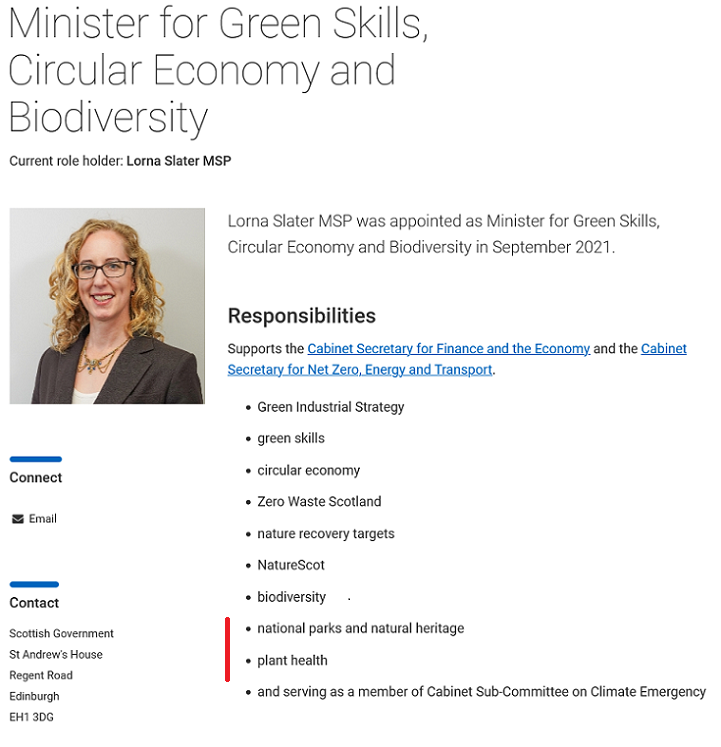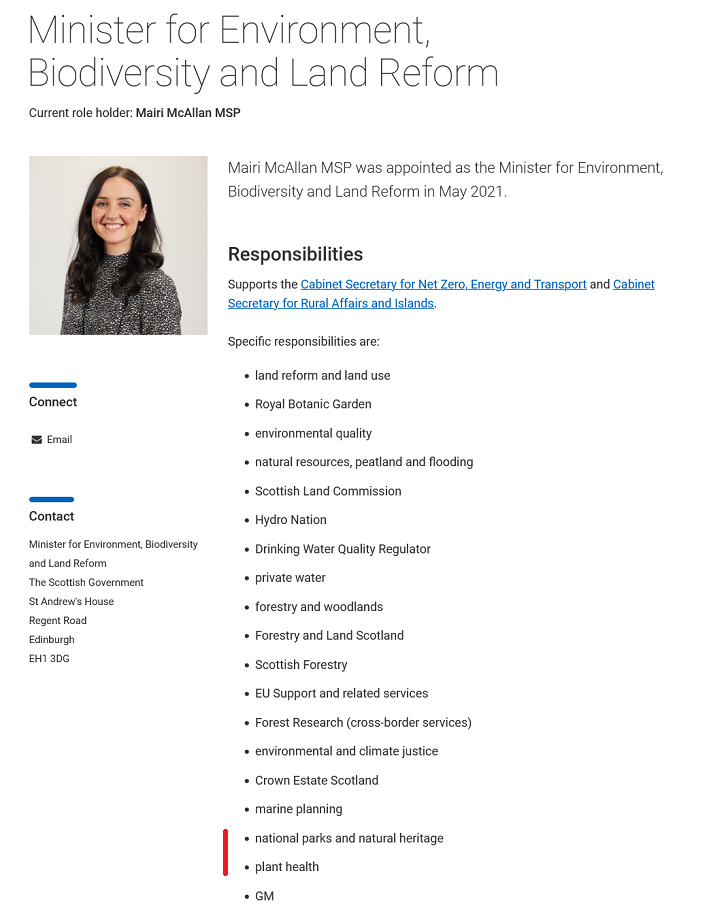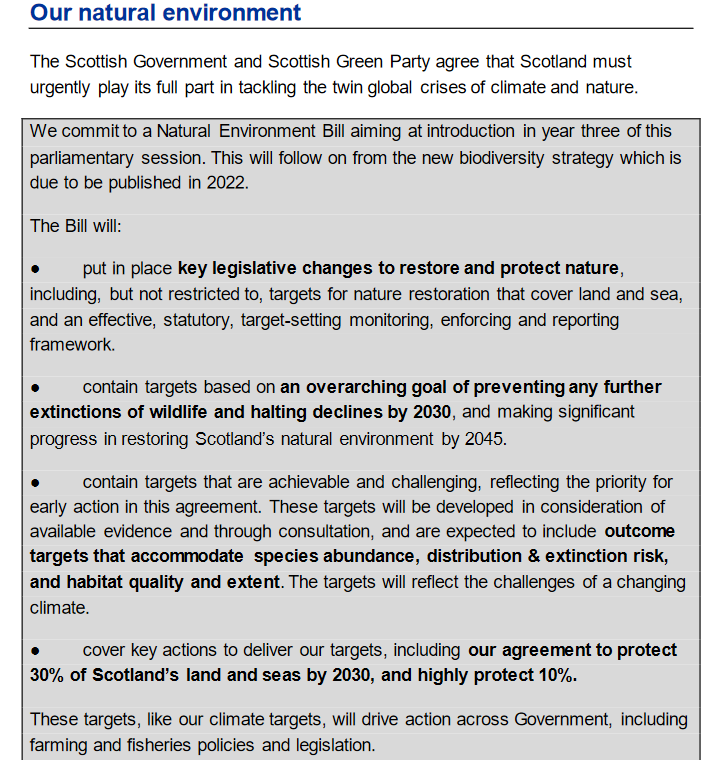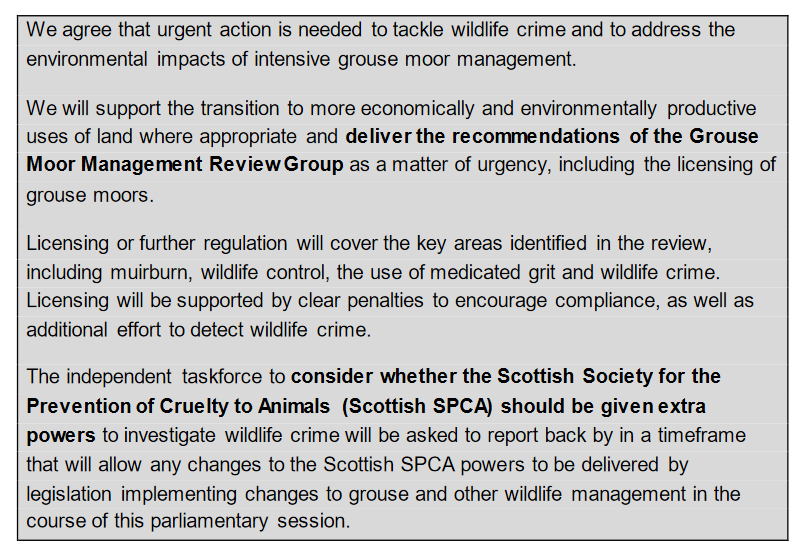This post takes a look at the implications of the co-operation agreement and shared policy programme that has been agreed between the SNP Government and the Greens (see here) for National Parks in Scotland.
Investment in National and Regional Parks
While the SNP said absolutely nothing about National Parks or Regional Parks in their election manifesto early this year (see here for extracts from the main political parties), the Scottish Greens committed to:
“deliver an ambitious programme of reform and expansion of our National and Regional Park network. We will create at least two new National Parks and one new Regional Park. We will invest in our new and existing parks so that they have an adequate ranger service and more powers to deliver its goals. We will deliver a programme of public and community land acquisition so that more of our Parks are publicly owned owned and managed in the public interest.”
The statement in the Shared Policy Programme appears to represent a compromise between the two positions:

Instead of two new National Parks, the Greens have obtained a commitment from the SNP Government to designate at least one – but only in response to demand from local communities.
There is only one place in Scotland where that has any chance of happening in the next five years and that is in Galloway where there is a well-organised campaign (see here) for a National Park that is supported by politicians from across the political spectrum. While a National Park in Galloway could make a difference, any idea that we should be aspiring to a coherent network of National Parks across Scotland and its coastal areas appears to have been abandoned. While not decrying the importance of local involvement, it appears that National Parks are no longer seen as a national issue but a local one.
The expectation that any proposals for new National Parks should be “smaller in scale” than existing National Parks will further limit their impact. It also appears unlikely the Scottish Government will entertain the idea of any coastal and marine National Parks which, to offer effective protection against the depredations of the industrial fishing industry, would need to be larger scale.
The commitment to invest more in visitor facilities and access, including in Regional Parks (which have been starved of resources and have been in danger of collapsing completely – see here) could have as great an impact. But that will depend on the amount of investment and it is not clear whether the Greens have agreed with the Scottish Government what that should be. Given the increase in staycations and visitor pressure on the countryside it would be in the public interest that an announcement is made very soon.
Improving the effectiveness of existing National Parks
In their manifesto the Greens committed to delivering:
“a programme of public and community land acquisition so that more of our Parks are publicly owned owned and managed in the public interest. As in the last Parliament, we will also oppose developments which exploit and degrade our National Parks for profit. As a matter of urgency, we will support a community buyout of the land currently under threat from a renewed Flamingo Land development at Loch Lomond.”
There is no mention of either land acquisition or Flamingo Land in the Shared Policy Programme. While the SNP Government would no doubt claim that land acquisition was costly, the £70.01m they have committed to spend on repairing and subsidising the funicular at Cairn Gorm over the next 30 years (see here) could have been used to buy up a substantial amount of land in our National Parks. The funicular, together with the fact that the Greens appear to have been unable to persuade the Scottish Government to instruct Scottish Enterprise to stop the proposed Flamingo Land development at Balloch, suggests that “developments which exploit and degrade our National Parks for profit” are likely to continue.
But perhaps the Green MSP, Lorna Slater, in her new Ministerial role will be able to change things for the better in our National Park working behind the scenes?

The challenge facing Ms Slater is considerable. For a start, in announcing her new Ministerial role, which includes responsibility for biodiversity, national parks and natural heritage and plant health, the Scottish Government failed to say anything about Mairi McAllan, the Minister who is currently also responsible for these areas.

In the absence of any other information, it appears Scotland may now have two Ministers for National Parks and Natural Heritage, Biodiversity and Plant Health!
Even if that gets sorted out, it appears Lorna Slater is likely to have very little power. For example, in terms of trying to change the way land is managed in our National Parks and lead the way in tackling the climate and environmental emergencies, it appears Lorna Slater will have to get agreement from Mairi McAllan who leads on land reform and land-use, forestry, peatland etc.
Now Mairi McAllan is new and for all I know is green at heart, best buddies with Lorna Slater and is looking forward to working with her. But even if that is the case, the organisational confusion and complexities between Ministerial portfolios are likely to continue. For Lorna Slater has a different boss – two in fact, Kate Forbes the Finance Secretary and Michael Matheson, the Secretary for “net zero” – reflecting the economic elements of her remit. Whereas Mairi McAllan is responsible to Mairi Gougeon the Rural Affairs Minister. Add in different civil servants and how that will work in practice is anyone’s guess.
Reform in the Gorms
It this is not challenging enough, the co-operation agreement between the Scottish Government and the Greens explicitly excludes five areas one of which reads as follows:
“8. While we have been able to agree significant areas for priority action in species protection, field sports are excluded from this agreement, except to the extent they are addressed in the shared programme.”
If the Cairngorm National Park is ever to function as intended, let alone address the climate and nature emergencies, there are two key issues which need to be tackled: high deer numbers and intensive grouse moor management. Both have serious negative consequences for woodland and peatland and have been responsible for the extermination of much of the wildlife that would potentially be found in the National Park. Both are a direct consequence of land being managed for field sports but the SNP Government’s agreement with the Greens means that this cannot be tackled.
I would like to be proved wrong but it appears Lorna Slater has more than one hand tied behind her back and the commitments in the shared programme (see below) to species protection and matters like licensing of grouse moors are unlikely to go very far.


Time will tell!

From what I read in your articles and seen in Scotland Their is no real infrastructure Loch Lomond 24 miles long and very little infrastructure Kids not aloud to go camping round Loch Lomond Loch Lomond should have been the jewel in the crown for Scotland’s turisom And next to what was once a great city Glasgow which is now a run down rat infested city Having your hands tried behind your back with a Minster salary Not bad work if you can get it Scotland National Parks are a disgrace and a nice money earners for the wrong people
I fear we will see little real progress on environmental issues under Green SNP agreement due to number of tied in clauses.
Another example is announcement last week that the £120M sheriffhall roundabout fly over will go ahead with construction beginning in 2025, despite planning analysis showing the construction of flyover will increase traffic in to Edinburgh by 6 percent further worsing congestion in the city and be detrimental for active travel and air pollution. Despite Edinburgh council and green party being against the fly over building and with Greens having a manifesto commitment of no new road building, the flyover is set to go ahead. On the green party website there is alot of information coming out against this flyover but due to get out clauses in the SNP and green Agreement, such new road building will still go ahead. So really is hard just now to see what real difference the green party will actually do.